Where to place a gazebo? Construction experts reveal the best spots
Discover the ideal gazebo locations and the key considerations for each one
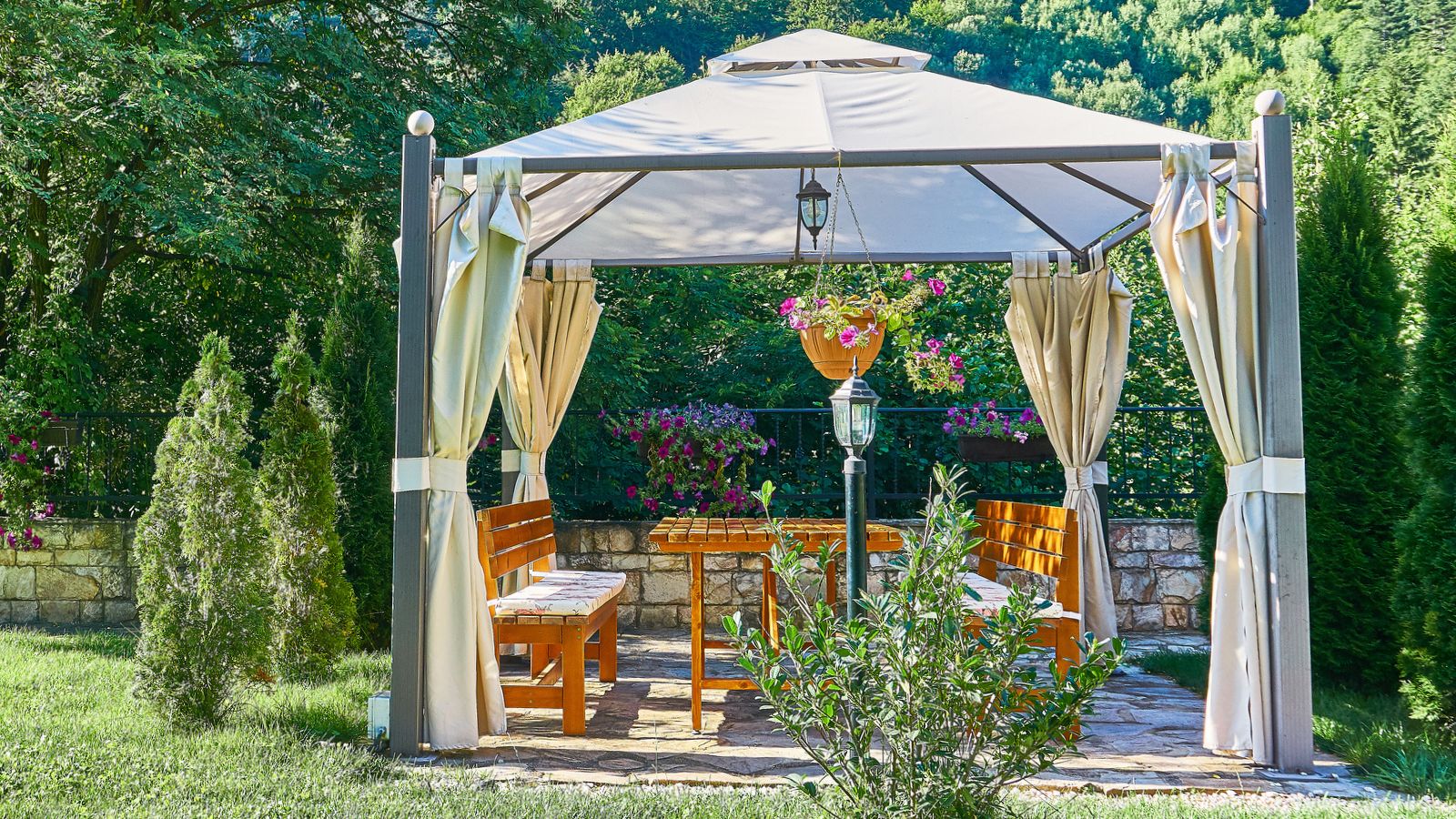

A gazebo is a perfect addition to any yard, offering shade and space for socializing.
However, they're a big investment and can be tricky to install. With so much time and money on the line, putting your gazebo in the wrong place could be an expensive mistake.
I spoke to outdoor structure experts about the best spots to place a gazebo, and how far away it should be from your home.
1. On a patio
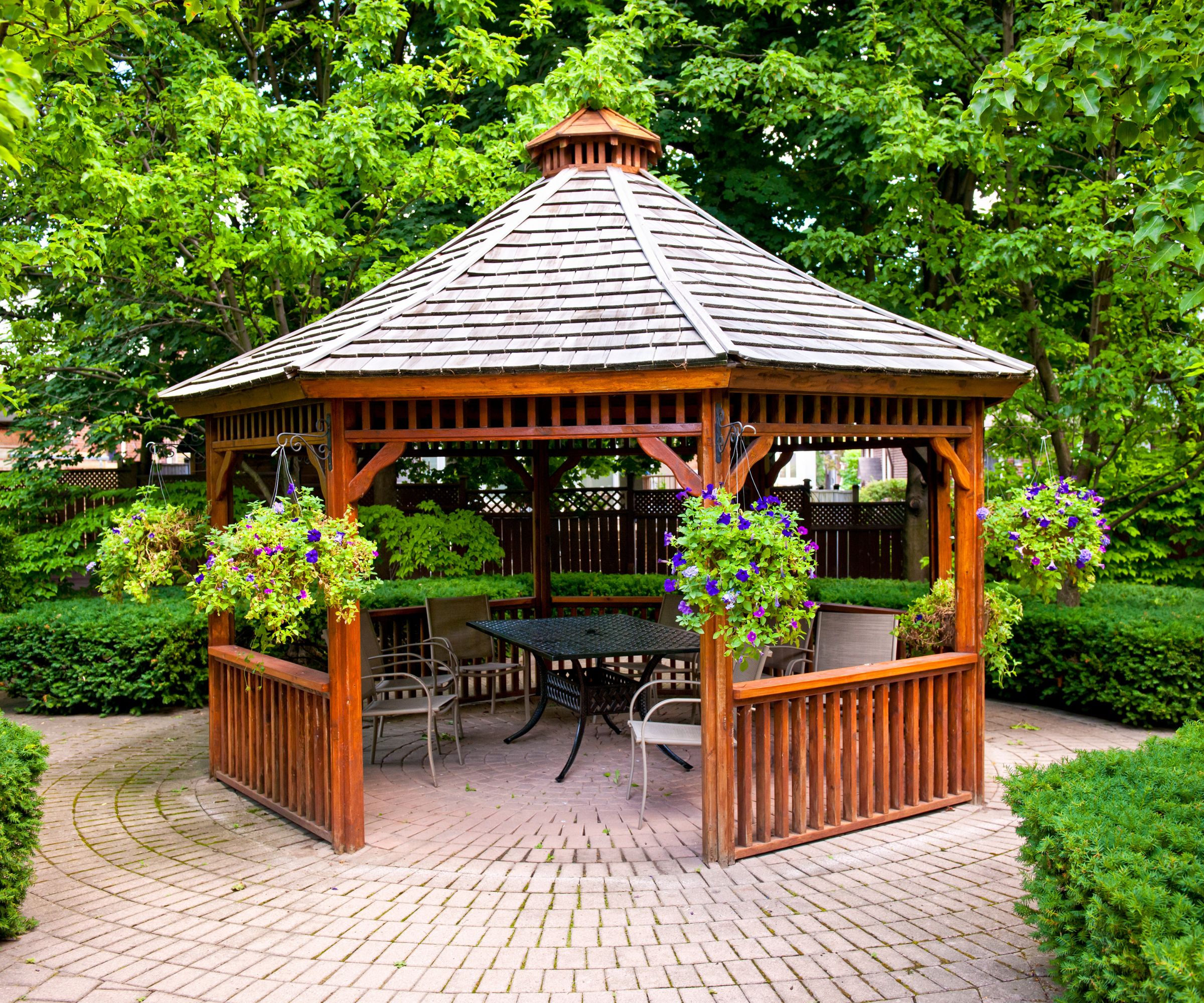
A gazebo is an excellent addition to a patio because it makes it more usable. A patio is great, but if you live somewhere with changeable weather and a lot of rain, it can be frustrating to use. You can lay the table for a meal al fresco only to find it ruined by a sudden rain shower. A gazebo means you can eat outside whatever the weather. Conversely, a gazebo is a great choice if you live somewhere with a lot of sun because it means you can eat lunch outside even when the sun is at its height.
On top of the weather, a gazebo can help with privacy. By their nature, patios are fairly exposed, and if you live in a busy neighborhood you'll know that people on the second floor of nearby houses can see straight onto your patio. A gazebo blocks that view, giving you more privacy and peace of mind.
A patio is a particularly good place for a gazebo because you don't need to take any extra steps with construction. A deck has to be rated to hold the weight of a gazebo, and a lawn needs a base installed to ensure that the gazebo doesn't shift. A concrete patio, however, will hold the weight and doesn't require the extra steps of a lawn or deck.
2. On a deck
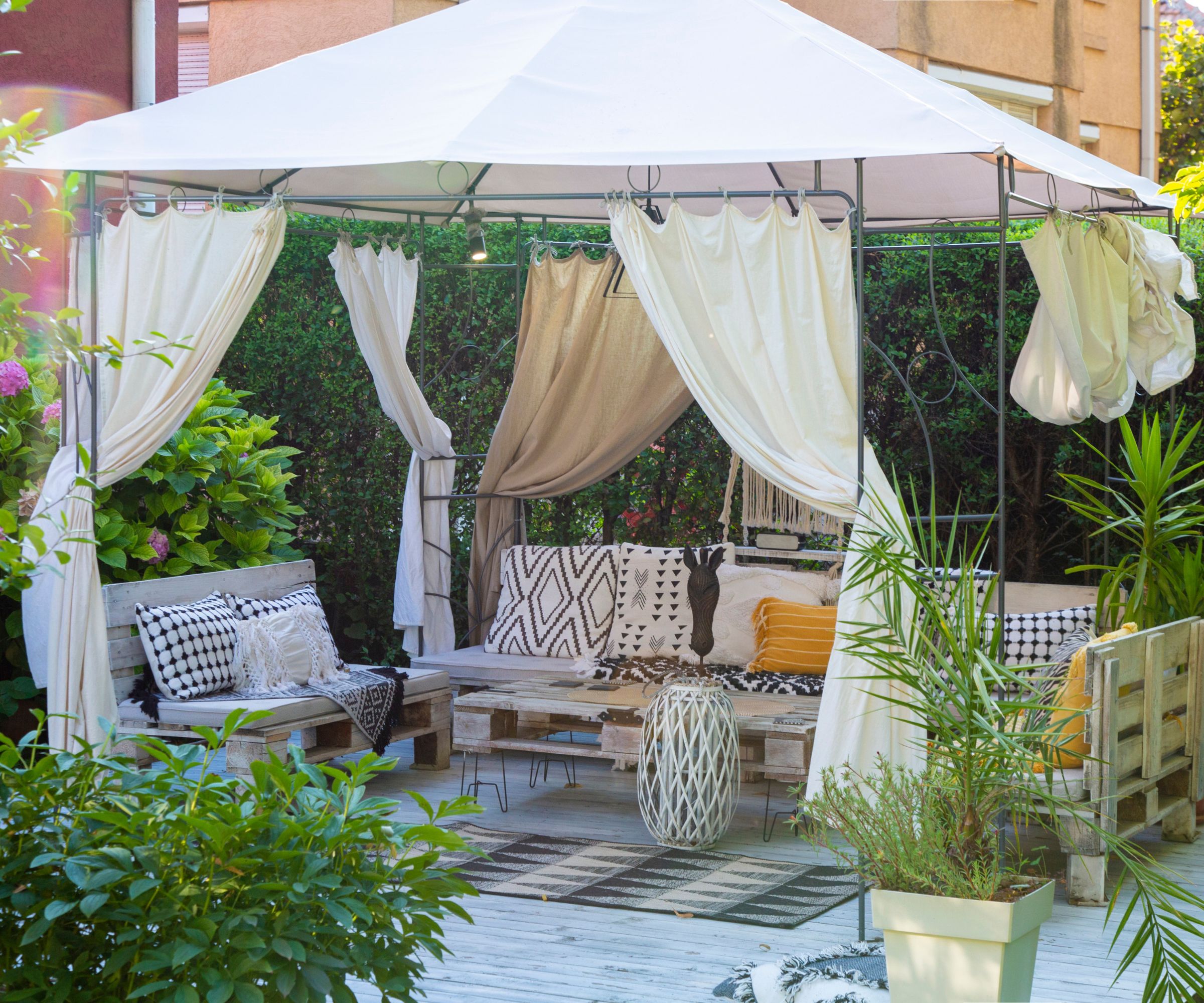
All of the above also applies to decks. Wooden gazebos look particularly good on decks, and bring rustic, traditional charm to otherwise boring decks. If your land backs onto a lake, a gazebo looks especially good by a wooden dock and gives you somewhere to watch the comings and goings of the boats on the water.
Design expertise in your inbox – from inspiring decorating ideas and beautiful celebrity homes to practical gardening advice and shopping round-ups.
However, there are some safety concerns here. Outdoor structure expert Luke Beerman told me that 'Placing a gazebo on a deck is a great idea, as long as the deck is sturdy enough to support the weight.'
Kevin King told me that it depends on the materials. It should be easy to install a gazebo on a deck if it is built directly on the ground. If it is up in the trees, or made from wood or composite, 'it must be framed correctly for it to be structurally sound.'

Luke is the founder and president of Freedom Fence, with a bachelor’s degree in Business and Natural Science from Liberty University. Luke has over a decades worth of business leadership experience in construction and general contracting and has built thousands of fences for both residential homeowners and commercial businesses.
Kevin King works for Lancaster County Backyard, a company which builds pavilions, pergolas, gazebos, timber frame structures, sheds, and garages.
3. On your lawn
One of the basics of good garden design is to divide your garden up into zones, and a gazebo can be a key part of your layout. A gazebo in the middle of a lawn breaks up the monotony of plain grass and gives your garden a focal point. If you have the room, it can be incredibly rewarding to place your gazebo on your lawn and create 360° views of your property.
However, it's not as simple as just placing a gazebo on your grass. Kevin King told me that 'If you are planning to put a gazebo on your lawn, it needs a proper foundation. When you place your gazebo directly on the ground, parts of the gazebo will start to warp and rack. After a few years, some of the joints will start to come apart and any screen doors will probably not close properly.'
Thankfully, this is resolved with a good foundation. Kevin recommends installing a crushed stone foundation to give your gazebo a good base.
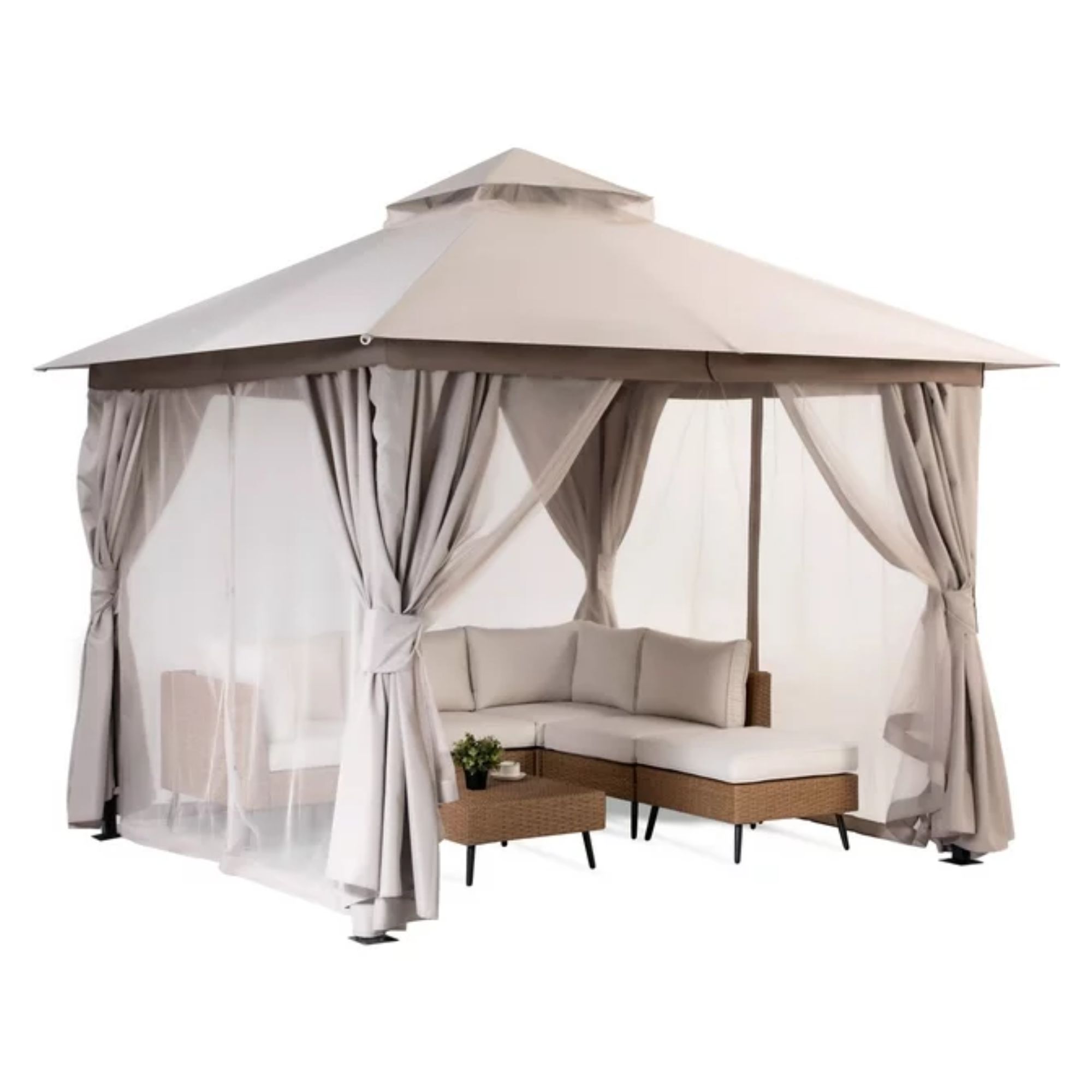
Seats: 4 Dimensions: 10ft x 10ft x 9.30ft Materials: iron, polyester
This gazebo is perfect for hotter climates. The usual heavy curtains are supplemented with light, airy netting that will keep you cool and protected from bug bites without closing off the entire gazebo.
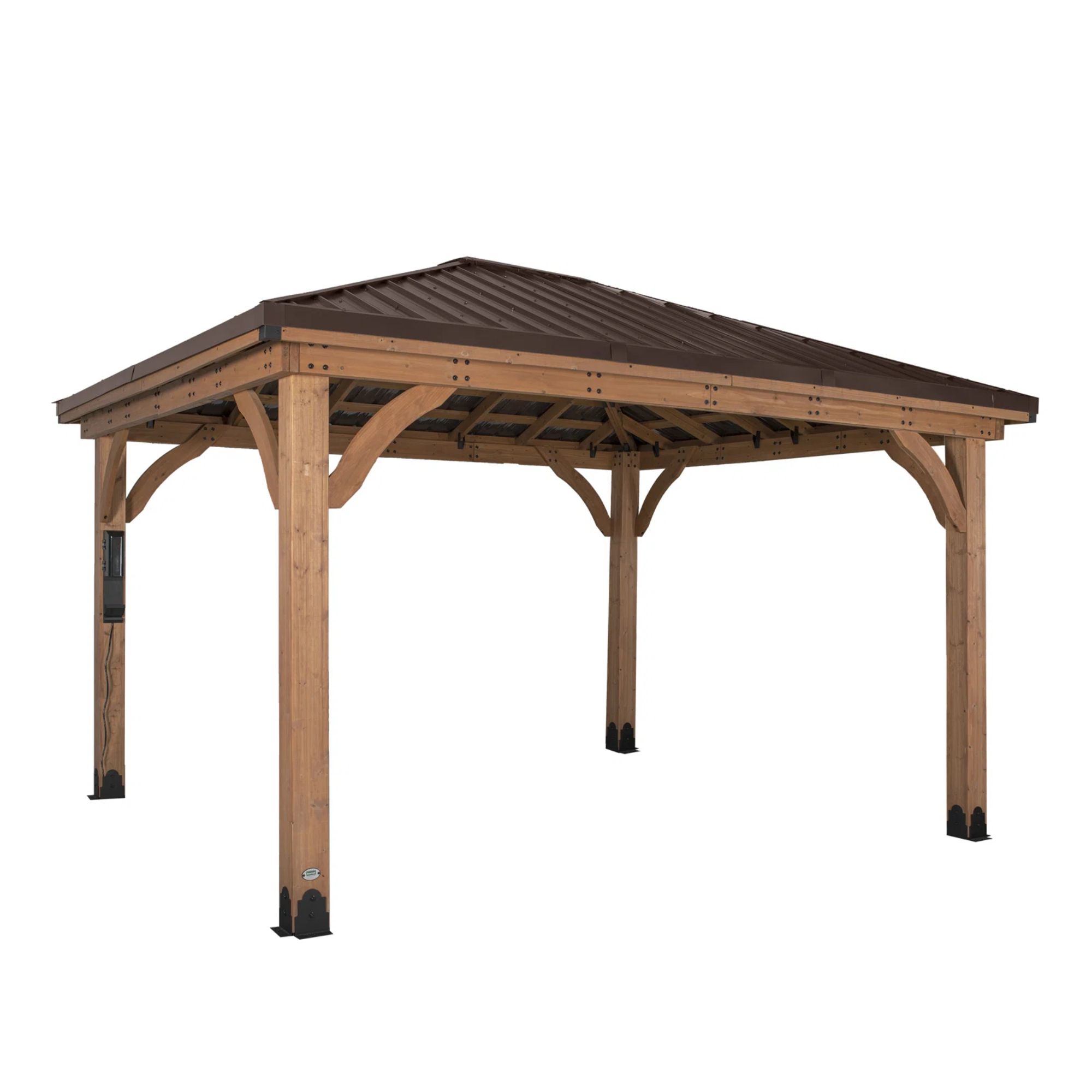
Seats: 8 Dimensions: 14ft x 10ft x 9ft Materials: cedar, steel
This gazebo is a classic wooden design that will work for most gardens. However, the best feature is hidden at the back. This gazebo has a power outlet built-in, so you can run electric grills, speakers, TVs, and projectors in the great outdoors.
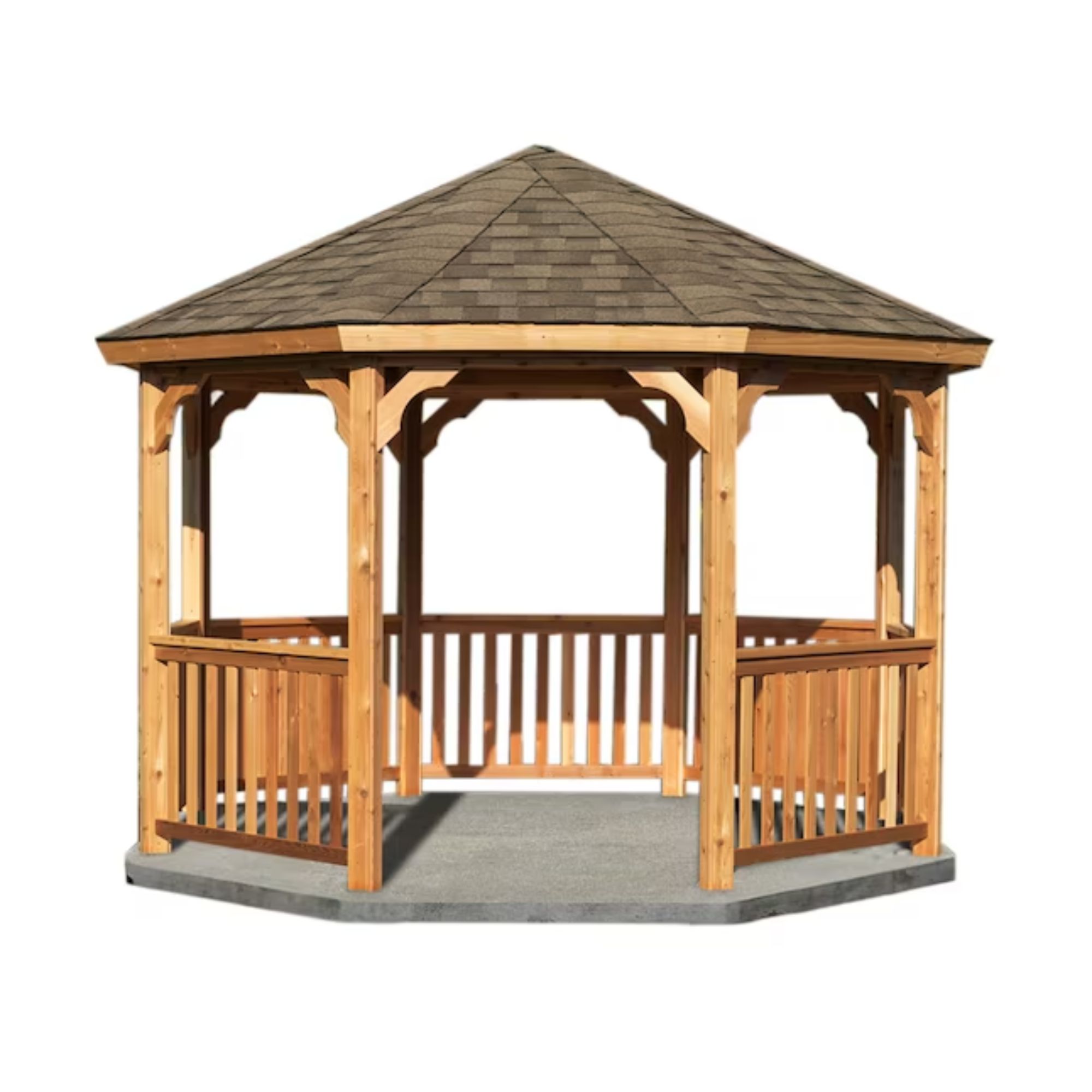
Seats: 6 Dimensions: 12ft x 12ft x 9ft Materials: cedar, pine
If you want a permanent structure, I like this octagonal design. Made by Amish craftsmen in the USA, this traditional gazebo is built to last. It's perfect for a quiet area at the bottom of the yard, away from the noise of the house and the street.
4. Next to a fence
A controversial spot for a gazebo is next to a fence. It can be an excellent idea - if you have a disused corner of your yard, a gazebo can turn a pointless patch of lawn into a quiet nook that's perfect for relaxation. Backing a gazebo onto a fence also gives privacy, because the view on at least one side is totally blocked.
However, as with building a pergola next to a neighbor's fence, there are zoning laws that you must obey. Depending on where you live, zoning laws mandate that outdoor structures must be anywhere from 5 to 20 feet away from a property line. You also need to make sure that it doesn't block your neighbor's sight lines, or cause too much shade to fall into their yard.
Outdoor construction expert Luke Beerman gave me a simple rule to follow. 'You can put a gazebo next to a fence, just make sure it’s stable and not blocking any views or access.'
5. Next to a pool
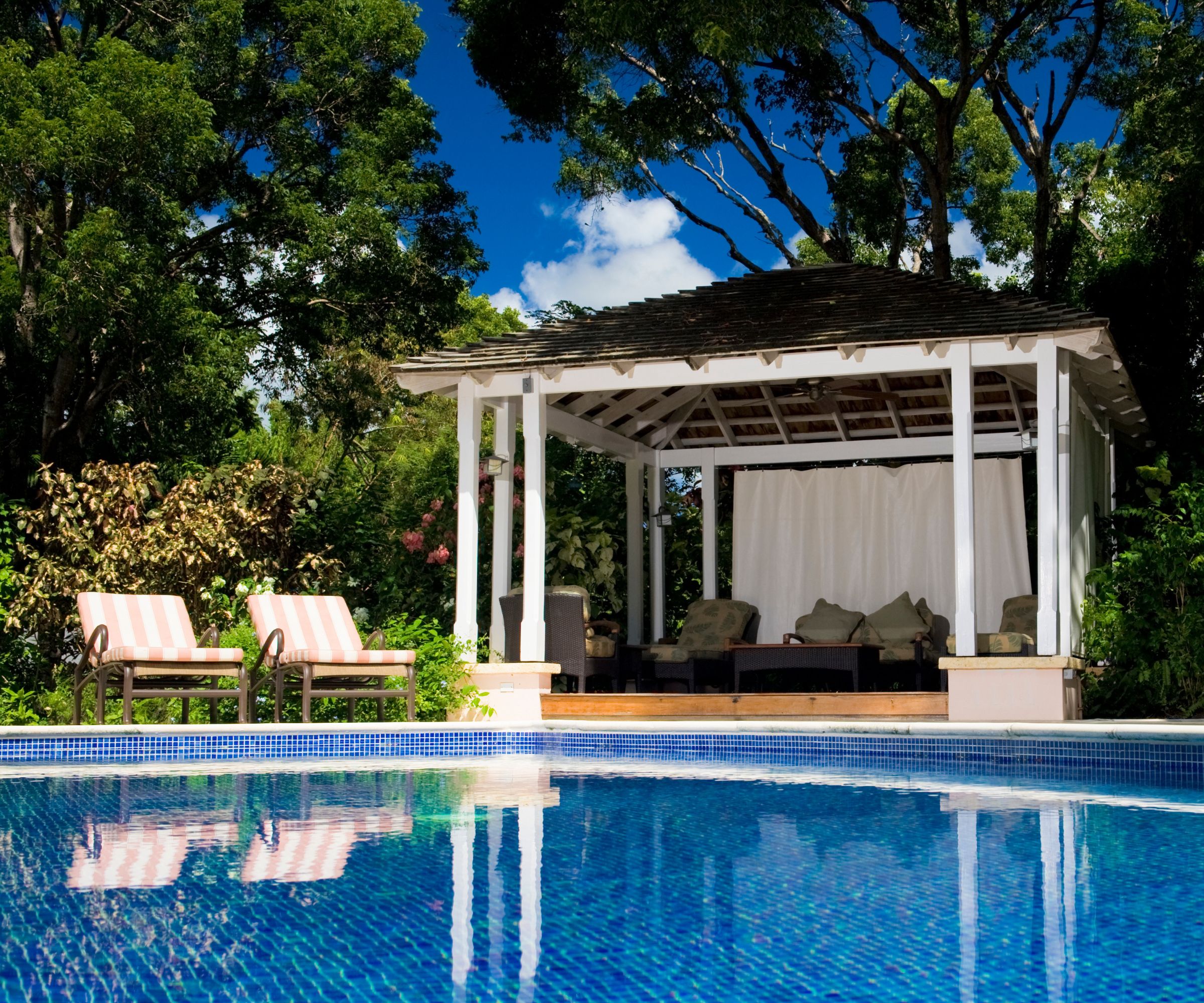
One of the best spots for a gazebo is next to a pool. A gazebo provides shade and coolness when the sun is at its peak, offering welcome shelter for sunny afternoons in the pool. If you have young kids, a gazebo provides an excellent spot to unwind but also keeps you on hand to ensure your kids swim safely. The pool itself can be a great aesthetic choice. Hosting dinner under a gazebo next to a gently glowing pool brings a sense of sophistication to any family cookout.
However, depending on local law, you may need a building permit to do this. On top of that, there are some important safety parameters to bear in mind. Kevin King says that 'Often, gazebos are placed 10’ to 20’ away from a pool. I would advise against placing your gazebo closer than 6’ from the edge.' This limits the chance of debris or tiles blowing from the gazebo into the pool, and ensure that there is an area of clear paving around the pool in case something goes wrong and you need to access it.
6. At the bottom of the garden
The experts I spoke to were unanimous in that they think gazebos are more effective further away from the house. Putting a gazebo right by the backdoor is great for access, and makes it easy to run inside and grab a refill on drinks.
However, there are two issues with this. The first is that in many states and counties, attaching a gazebo to a house requires extra building permits. The gazebo would need to be 4 feet away from the house at minimum for it to be effective and on the right side of the law. Th at's a conservative estimate, too - in most places, the minimum distance is more like 15 feet.
The second issue is that placing a gazebo right next to your house slightly defeats the point. A gazebo should be a calm, quiet shelter away from the bustle of the house and the noise of your neighbors. Placing a gazebo as far away from the house as you can will help to create a calm, quiet spot for reading or socializing.
Kevin King told me that 'Some people like them just outside their back door, which can be nice depending on the layout. However, I think that it is better to be further away. A good place for a gazebo is in or near some trees where it is cooler and gives a relaxed atmosphere.
Gazebo FAQS
Can I put a gazebo on my front lawn?
Design-wise, there's nothing stopping you from putting a gazebo on your front lawn. However, local zoning laws may forbid it, or your HOA may not allow you to.
Do I need to put my gazebo on pavers?
Putting your gazebo on pavers can give it a little stability. However, pavers can move with the ground, so it's not as stable as installing a proper concrete foundation.
For more help with gazebos, take a look at our guide to the difference between a gazebo and a pergola and which is best between a gazebo and a patio umbrella.

As a gardens and lifestyle contributor, Alex makes sure readers find the right information to help them make the best purchase. Alex got his start in reviewing at the iconic Good Housekeeping Institute, testing a wide range of household products and appliances. He then moved to BBC Gardeners’ World Magazine, assessing gardening tools, machinery, and wildlife products.